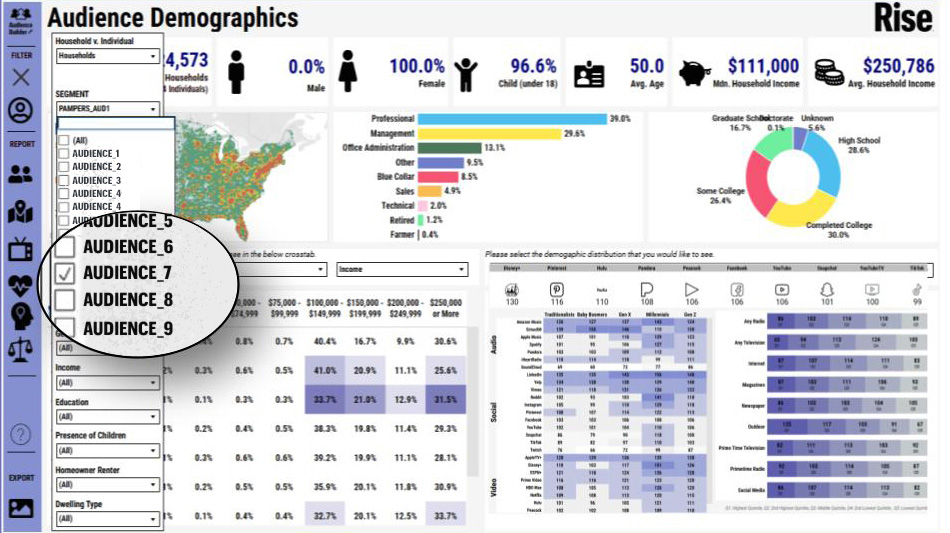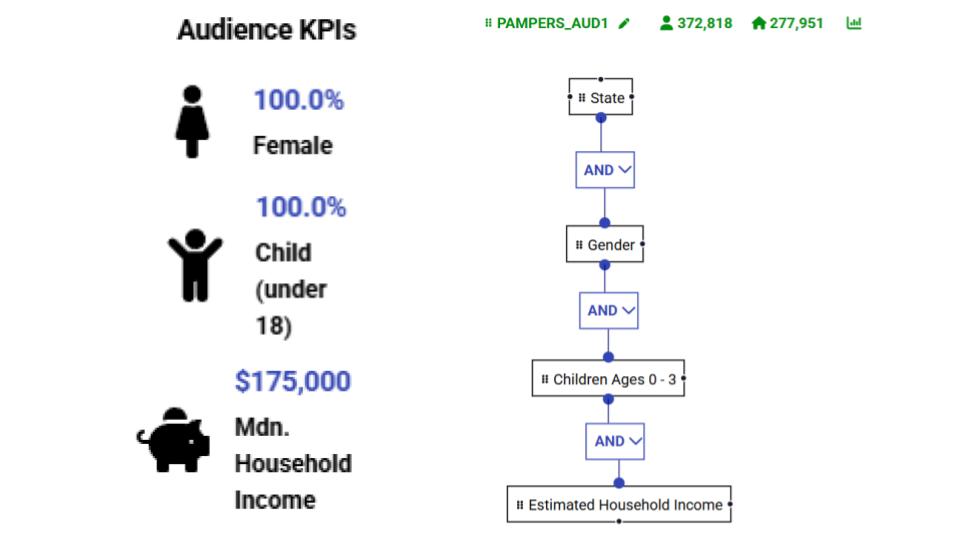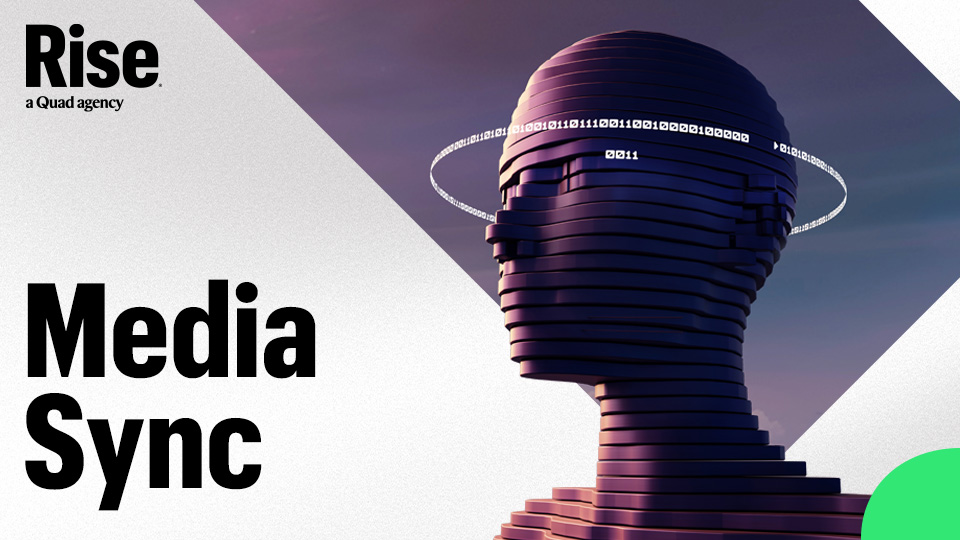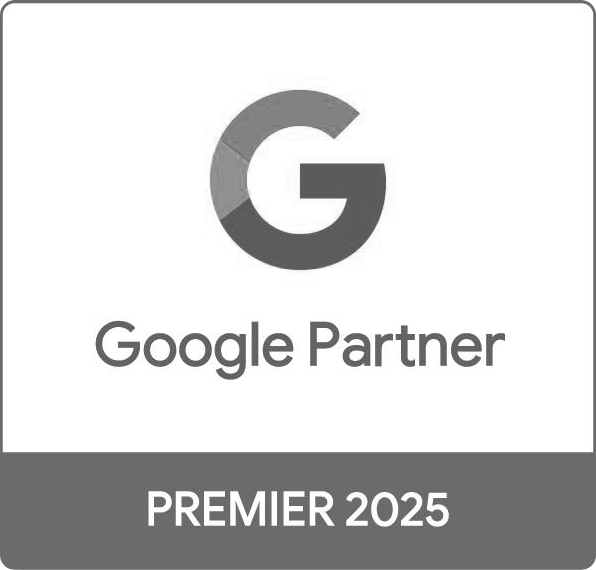
Insights from the Google x Rise Executive Growth Summit 2025
AI may be reshaping marketing at record speed, but the most successful brands are proving one thing: Automation alone isn’t a strategy. It’s the combination of real people and real data that defines marketing’s future.
That message was front and center at the Google x Rise Executive Growth Summit in September, where Justin Garvin, Senior VP of Media Strategy and Planning at Rise, a Quad agency, joined industry leaders to discuss how AI and audience strategy are converging to drive smarter marketing outcomes.
“AI can optimize performance,” Garvin said. “But it can’t replace the judgment that comes from understanding people — their motivations, their context, their intent. That’s where real marketing intelligence lives.”

Justin Garvin and Dean Ferenac of Rise discuss AI in marketing during the Google x Rise Executive Growth Summit.
Marketers who will lead the next era are the ones who know how to guide AI: shaping it with the right data, the right signals and the human insight that gives those systems direction. And that shift begins with recognizing how consumer behavior has evolved.
Consumer behavior has changed fast. AI accelerated it.
AI is no longer a future disruptor. It’s the defining force shaping how consumers discover, decide and engage today. To wit, consumer expectations have fundamentally shifted in an AI-dominated world:
- People now bounce within three seconds if an experience isn’t relevant or fast enough.
- Brands have less than 30 seconds to earn attention before consumers tune out.
- Thanks to AI tools, consumers save 25-40% of the time they once spent researching, comparing and deciding.
- Decision journeys have collapsed. One smart prompt can replace hours of browsing.
Marketers can no longer rely on long consideration cycles or incremental brand exposure. Consumer experiences with your content must meet the moment instantly, whether it’s brand-controlled or appearing inside an AI-generated overview.
How marketers should respond to shifting consumer behavior
For marketers, the implication of these behavioral shifts is simple: The experience can no longer afford to be slow, vague or generic. Every touchpoint, from landing pages to creative to the way your brand appears in AI-generated summaries, must deliver clarity and value immediately.
This means reevaluating your top digital surfaces, ensuring your content captures attention within seconds and optimizing for the new “instant research” mindset consumers now bring to every decision. In an environment where a single smart prompt can replace an entire discovery journey, the brands that win will be the ones that show up quickly and helpfully at the exact moment of need.
From granularity to guidance: Search has entered a new era
The days of managing thousands of exact-match keywords to maintain control are over. Search behavior has become too nuanced, too conversational and too unpredictable for manual management to keep up, especially in an AI-first environment.
Google’s shift from “granular and query-dominant” to “consolidated and automation-led” reflects this reality. Where marketers once fought for control through micro-targeting, today’s advantage lies in guiding automation, not wrestling with it.
“We used to win with granularity,” Garvin said. “Now we win with intelligence: feeding automation the signals it needs to know who matters most.”
How marketers can adapt to the new era of search
Rather than pouring energy into managing thousands of keywords and match types, marketers now need to focus on guiding automation through stronger signals and smarter structures. The emphasis shifts from controlling every lever to shaping the systems that do the work.
This means trusting automated campaign types to explore long-tail queries while ensuring they’re anchored by the right audience data and conversion signals. The marketers who succeed in this new era won’t be those who cling to manual precision. They’ll be the ones who redirect their time toward audience insight, strategic input and creative excellence.
Automation gives everyone the same tools. Data is what sets brands apart.
Question: If every brand has access to the same AI tools, how do you stand out?
Answer: By feeding AI better data. And that starts with audiences.
Smart automation only works when it’s trained on your customer truth: your first-party data, your conversion signals, your behavioral indicators. Brands that simply turn on automated campaign types without layering their unique data into them are leaving performance on the table.
The numbers prove it:
- Without audience data, cost per conversion can be up to 2x higher.
- Rise clients using Quad’s proprietary audience segments have seen 15–25% improvements in CPA vs. no-audience campaigns.
- Even against strong platform-native segments, Rise’s intent-based audiences can drive 5–7% lower CPAs.
What it means to “feed AI better data”
The most important step marketers can take right now is to ensure that automation is learning from the right customers. High-intent audience data should be built into every campaign — search, PMAX, demand gen, YouTube — so Google’s systems can understand not just what people are doing, but which people matter most to your brand.
By enriching your campaigns with meaningful first-party data and deeper conversion signals, you help the algorithm make more informed decisions about when to enter auctions, how to value each user and how aggressively to pursue the next best customer. This is how brands regain control in an automation-first world: not through manual intervention, but through smarter inputs.
Rise’s proprietary data stack: A modern advantage
This is where Rise and Quad’s investment in data becomes a true differentiator. Rise’s proprietary audience stack was built with multiple identifiers (name, address, email, MAIDs, IPs), enabling far higher match accuracy across platforms.
The stack includes over 20,000 attributes, spanning:
- Demographic data
- Behavioral and transactional signals
- Attitudinal markers
- Passion-based insights
- Media consumption patterns
- Purchase potential
- And proprietary data from Quad’s massive USPS footprint (a genuinely unique differentiator)
Dean Ferenac, Rise Senior VP of Connections Strategy, described the value succinctly: “We’re connecting what people do, think and feel to the moments when they’re most likely to act. That’s where context becomes performance.”
Read: Why precision is the new scale: Hyperlocal targeting that actually converts
How to put Rise’s data stack to work
The practical application of Rise’s proprietary audience stack begins long before activation. It starts with understanding your best customers at a deeper level. Rise uses tools like Audience Profiler to help brands uncover the motivations, behaviors and attitudes that define their highest-value audience segments.

Audience Profiler uncovers insights on who a target audience should be with demos, passions and media consumption.
From there, Quad’s Audience Builder tool transforms these insights into precise, scalable prospecting groups that can be deployed across Google’s ecosystem, ensuring that every impression and every bid is directed toward individuals most likely to convert. It’s a modern form of targeting: transparent, data-enriched and adaptable to any campaign objective.

Audience Builder translates insight into activation, building the audience for campaigns.
Intent-driven prospecting is the new frontier
Most marketers use Customer Match for remarketing or exclusions, which is important, but limited. The real opportunity lies in using intent-driven prospect audiences that identify future customers with a high probability of converting.
Rise’s audiences use layered attributes (passions + behaviors + location + transactional propensities) to pinpoint high-value future customers at scale. This is particularly powerful in Search, where intent signals intersect with audience quality to determine:
- how often your ad enters the auction
- how aggressively AI bids
- how much you ultimately pay
How to elevate prospecting with intent-based audiences
Expanding Customer Match beyond remarketing opens up a powerful new growth lever: identifying future customers before they actively begin searching for your category. By pairing CRM data with Rise and Quad’s enriched attributes — from passions and transactional indicators to geographic and attitudinal layers — marketers can build high-intent prospect audiences that consistently outperform generic lookalikes or platform-native segments.
This matters most in search, where audience quality directly influences bidding, eligibility and cost. When high-intent audiences guide activation, brands not only reach more qualified prospects; they shape the very queries their campaigns compete on.
The new mandate: Feed AI better, measure better, decide better
As the Summit reinforced, Google’s AI is now the integrated engine powering the entire marketing journey. But engines need guidance:
- AI is powerful, but directional. It needs strategic boundaries.
- AI is flexible, but impressionable. It learns from the data you put into it.
- AI is fast, but not wise. Wisdom is still a human contribution.
The mandate isn’t to replace human judgment with automation. It’s to elevate human judgment by letting automation handle the heavy lifting. Marketers need to think about AI as the engine powering the system, and data as the fuel that determines how well it performs.
By focusing on the quality of the inputs (the structure, the signals, the audience intelligence), marketers free themselves to spend more time on what only humans can do: interpreting cultural shifts, designing meaningful experiences and making the strategic decisions that ultimately determine brand growth.








